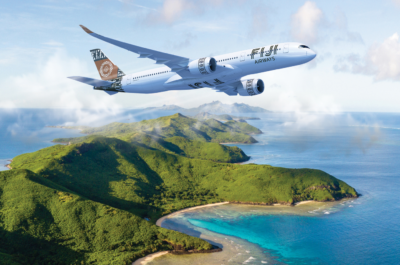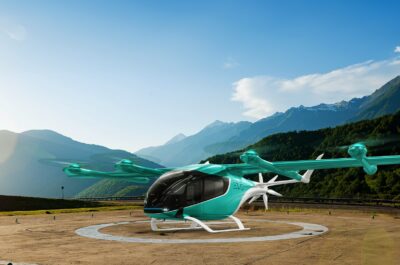…
Qantas announced a profit before tax of $181 million for the full-year ended 30 June 2009, down 87 per cent on the prior year.
Qantas Chief Executive Officer, Mr Alan Joyce, said the diversity of the Qantas Group’s operations had contributed to it being one of the few airline operators worldwide to produce a full-year profit, despite the impact of the global economic downturn.
“There has never been a more volatile and challenging time for the world’s aviation industry. When most airlines are reporting losses, the Qantas Group is reporting a profit for the full-year,” Mr Joyce said.
“Through unprecedented and significant shifts in operating conditions and demand, we have remained financially strong.
“This has been due to our strategy built around two strong flying brands in Qantas and Jetstar, a portfolio of airline-related businesses, and an ongoing focus on managing costs and driving efficiencies.”
Mr Joyce said the 2008/09 financial year was one of two contrasting halves for the Qantas Group.
“The first half of the year was characterised by a generally favourable operating environment and strong demand,” he said.
“During the second half, the environment deteriorated, with domestic and international competitor capacity continuing to grow and demand in key markets softening quickly as the global slowdown hit.
“This was compounded by one-off events during the year, including protracted industrial action, H1N1 influenza and the costs associated with introducing the new Qantas A380.
“The Qantas Group moved quickly and decisively to address these unprecedented circumstances by reducing capacity, adjusting capital expenditure and further reducing fixed and semi-variable costs.
“At the same time, we continued to stimulate the market via pricing initiatives and maintained a strong focus on customer service, safety and environmental performance.”
Key drivers of the result were:
- weaker domestic and international demand, which led to a 4.3 per cent yield decline and a 1.1 per cent decrease in seat factor (load) to 79.6 per cent for the Group; and
- capacity cuts of 1.9 per cent across the Group, which led to the removal of some variable operating costs as well as reduced revenue. Jetstar, however, increased capacity during the year through network growth.
The Group also experienced one-off events during the year which affected the result, including:
- industrial action by the Australian Licenced Aircraft Engineers Association, with a resulting maintenance backlog, which cost an estimated $130 million in additional expenses and lost revenue;
- the impact on profitability of the H1N1 Influenza 09 virus, estimated at $45 million; and
- costs associated with the introduction of the new Qantas A380, estimated at $37 million.
Non-operating items included in the year’s result were:
- aircraft write-downs and provisions of $152 million, which included plans to ground a number of wide-body aircraft;
- restructuring and redundancy expenses of $106 million as a result of capacity cuts and organisational restructuring;
- write-downs of investments and goodwill of $18 million;
- changes in Frequent Flyer accounting estimates of $164 million, of which $84 million related to the non-recurring benefit of the direct earn points conversion strategy; and
- an $86 million profit on the reverse acquisition of Jetset Travelworld Group by Qantas Holidays.
Fleet, Product and Service
Mr Joyce said the Qantas Group remained committed to investment in customer service, product enhancements, infrastructure, technology and training.
“The negotiation of changes to aircraft purchases, as part of our response to the downturn, has helped preserve cash and will ensure ongoing investment in these core areas,” he said.
“We also remain focused on a long term fleet renewal program and still have one of the largest order books for new and fuel efficient aircraft in the world. For example, we have more than 160 new aircraft on order over the next 10 years that will deliver operational cost savings and allow our airlines to grow and enter new markets.
“Having adjusted our orders earlier this year, we remain committed to the Boeing 787 program and continue to monitor developments closely.”
The Qantas Group will now take four to five A330-200 aircraft, for delivery from November 2010 and to provide for growth of Jetstar’s long haul international operation.
Qantas
Mr Joyce said Qantas had held up well given the changing economic situation.
“Qantas experienced a challenging second half as a result of the global downturn, with demand and yields, particularly in international premium cabins, adversely affected,” he said.
“The successful launch of Buenos Aires services in November 2008 built on an international network that now covers six continents and spans the globe.
“The airline remains at the centre of the Group’s operations and will continue to invest in key market segments and growth opportunities, and benefit from the integrated operations structure we have introduced.
“Qantas’ network, schedule, product, service and on-time performance have meant it remains the best airline for business travellers. We have identified untapped potential for the airline in servicing small to medium sized enterprises, and are introducing new initiatives to build our market share.
“A clear highlight during the year was the introduction of the Group’s new flagship, the Qantas A380. Three aircraft are already in service, with a further three to commence operations by the end of the year.
“The launch of the new Centre of Service Excellence, and a range of customer product and service enhancements, along with a return to market leading on-time domestic performance, are delivering very strong customer satisfaction levels.”
Jetstar
Mr Joyce said Jetstar had a record year in a deteriorating market environment, delivering improved profitability while increasing capacity by 14.4 per cent.
“In May 2009, Jetstar became the second largest carrier of passengers, to and from Australia, after Qantas,” he said.
“Jetstar also became the largest airline between Japan and Australia and provided a profit turnaround for the Group in this important market, despite H1N1 influenza. New Zealand domestic operations were also launched by Jetstar in June this year which, in the first month of operations, returned a profit.
“Investment in Jetstar over the next 12 months, and beyond, will be significant, with an additional seven A320 aircraft to be added to the Singapore, Australia and New Zealand flying businesses, as well as four to five additional A330-200 aircraft.”
Mr Joyce said the Qantas Group had increased ownership of Jetstar Asia and was looking for opportunities to build a platform for future growth for the Jetstar brand in Asia, the world’s largest potential aviation market.
“Jetstar Asia has made a decision to grow its capacity by 46 per cent for Singapore services over the next 12 months,” he said.
Qantas Group Plans
Mr Joyce said the two brand strategy, with Qantas and Jetstar, was all about building on a profit-maximising 65 per cent Australian domestic market share and developing an expansive international network.
“As an extension of this strategy, Jetstar will launch five A320 services a day between Sydney and Melbourne Tullamarine on 25 October, to enhance profitability and Group market position, ensuring we are meeting the needs of different market segments,” he said.
“Our two brand strategy has been most successful when we have created an optimal balance of Qantas and Jetstar services in a particular market, and the two airlines already operate jointly on a number of key domestic routes.”
Qantas will continue to operate 32 daily flights between Sydney and Melbourne. Jetstar will also continue to fly out of Avalon, with four daily flights to Sydney (down from seven) and multiple flights to Brisbane.
Mr Joyce said several new services would also be launched by Jetstar Asia over the next week, including the first Chinese mainland route.
“With this approach we will build on Qantas Group market share, and our leading corporate market position, and capitalise on the continuing appetite for leisure travel, both within Australia and across Asia,” he said.
Qantas Frequent Flyer
Mr Joyce said Qantas Frequent Flyer achieved standout returns during the year, which helped offset the demand and revenue declines experienced by Qantas.
“With the successful launch of its new alliance with Woolworths, Qantas Frequent Flyer has now passed six million members and more than 400 partners and, particularly in an environment where airline revenues have been affected, the value of the loyalty business, which is intimately aligned with the flying businesses, cannot be underestimated,” he said.
“The Qantas Frequent Flyer direct earn strategy, which allows customers to earn Frequent Flyer points by purchasing with an affiliated credit card, delivered strong revenue for the Group, despite softening consumer spending.
“Given the strategic value of Qantas Frequent Flyer to the Group, we will be retaining full ownership for the foreseeable future.”
Q Future
Mr Joyce said a new cost reduction program, known as Q Future, would target $1.5 billion in permanent savings over three years, starting from this year, including $500 million in 2009/10.
“Q Future will focus on Qantas’ operations and improving efficiencies across a range of areas, including sales and distribution, fuel conservation, aircraft utilisation and schedule, and procurement,” he said.
“We are also keeping a close watch on oil and fuel prices. While well below the record levels seen in 2008, they remain volatile and are trending upwards. For 2010, the Qantas Group has hedged 80 per cent of fuel costs at a worst case price of US$89 per barrel.”
Q Future builds on the success of the Sustainable Future Program which delivered over $550 million in savings for the year.
Dividend
With the interim dividend of 6 cents per share, the Qantas Group has paid out 100 per cent of profit after tax. Under the present circumstances, the Board considers it prudent not to pay a final dividend, and future dividends will be assessed against ongoing earnings performance and capital requirements.
Outlook
There are signs of an improvement in passenger volumes. In addition, yields have stabilised at the levels experienced in the second half of the 2009 financial year. High levels of volatility in the economic outlook, industry capacity, passenger demand, fuel prices and exchange rates continue. Given the high level of uncertainty it is not possible to provide any profit guidance.
Financial commentary is contained in the attached appendix.
Vicky is the co-founder of TravelDailyNews Media Network where she is the Editor-in Chief. She is also responsible for the daily operation and the financial policy. She holds a Bachelor's degree in Tourism Business Administration from the Technical University of Athens and a Master in Business Administration (MBA) from the University of Wales. She has many years of both academic and industrial experience within the travel industry. She has written/edited numerous articles in various tourism magazines.











































































